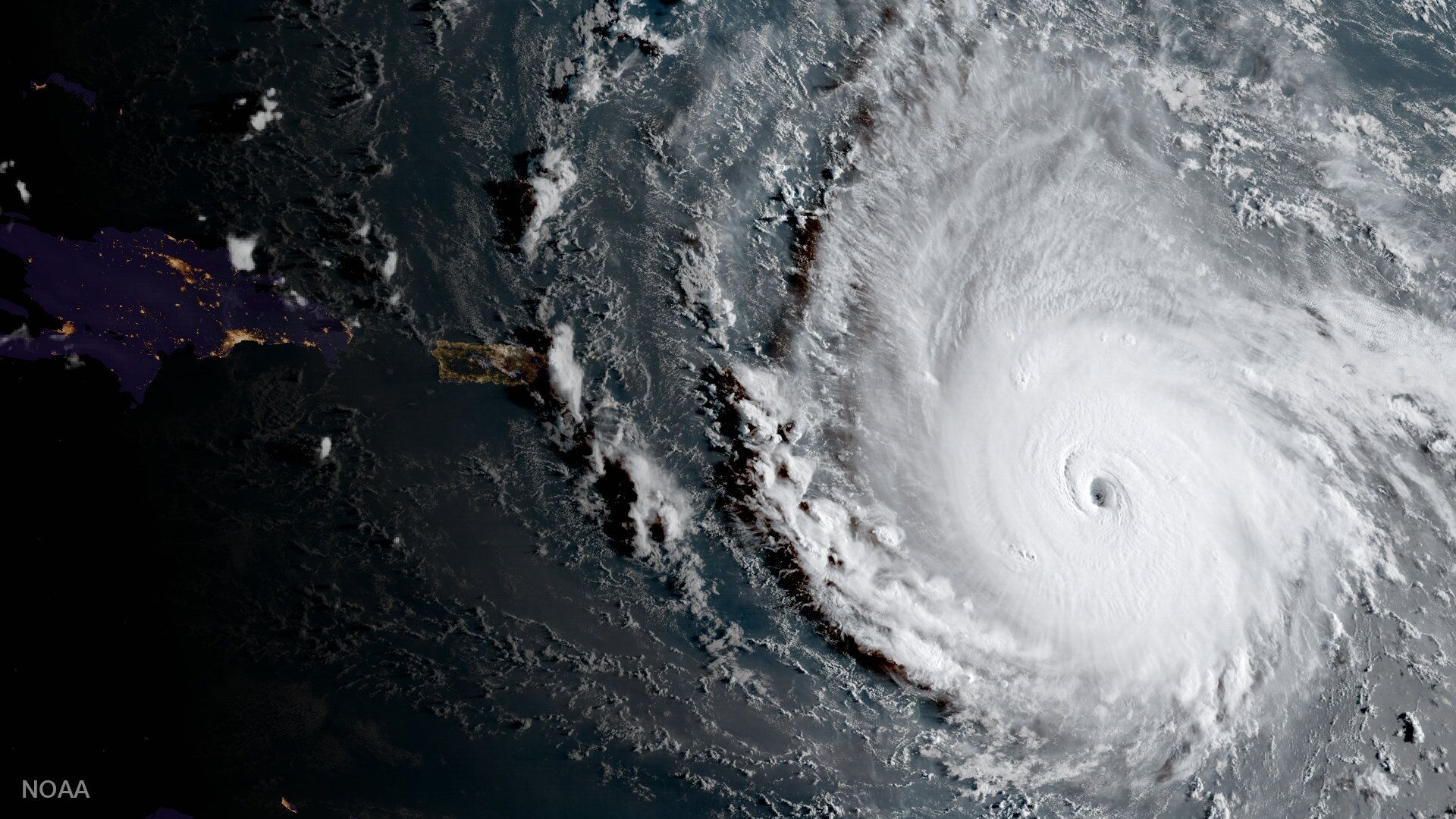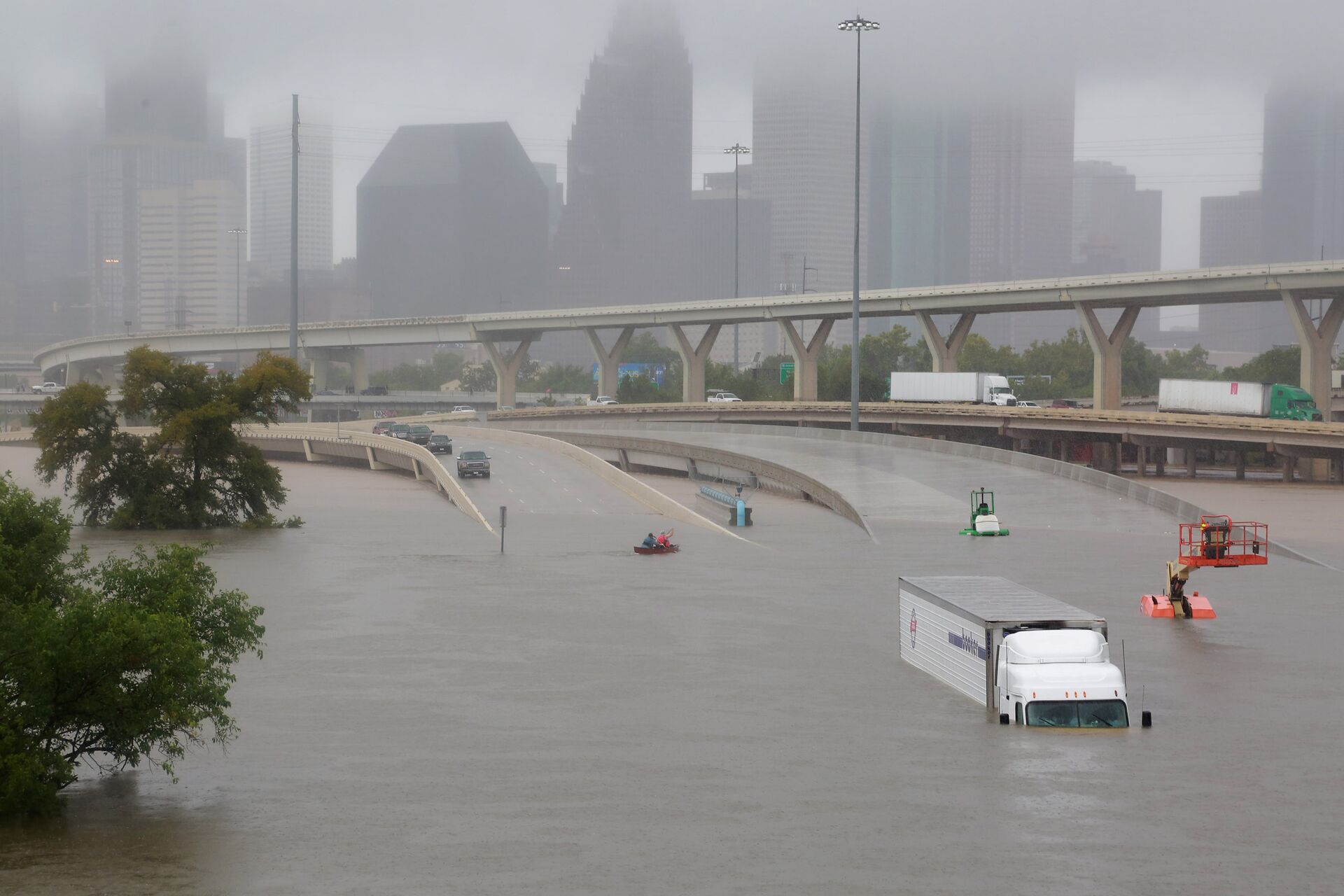Climate Change-Driven Cyclones Could be Regular Sights in Europe in 30-50 Years, Meteorologist Warns
01:22 GMT 21.09.2021 (Updated: 10:42 GMT 21.04.2023)

© AP Photo / NOAA
Subscribe
As global warming brings up the temperature of ocean waters, tropical cyclones will endanger areas of the planet further and further from the tropics, including Europe, a Dutch meteorologist has warned months after devastating floods killed scores in nearby countries.
“There is research out there suggesting that we are going to see more hurricane-force storms which were once tropical cyclones and have moved into Europe,” meteorologist Nadia Bloemendaal, a researcher at Vrije Universiteit Amsterdam, told Euro News on Monday.
“Climate change is the fuel for the tropical cyclone,” she warned. “If we are going to have water that is 30 degrees Celsius, that’s a lot of fuel for tropical cyclones to keep going and keep intensifying.”
According to the researcher, her models indicate that in the next 30 to 50 years, sea temperatures in northern coastal regions could hit 27 degree Celsius, which is warm enough to drive the creation of tropical cyclones.
#IdaHurricane has strengthened at 3X rate of rapid intensification in past 8 hours.
— Matthew Cappucci (@MatthewCappucci) August 29, 2021
There's a robust link with #climate change.
Once-a-century RI nowadays could be once a decade by 2100. Warming bolsters odds of pre-landfall spikes in strength. https://t.co/9O3UjtQYt9 pic.twitter.com/JVShReZSyG
At present, there are only a couple of places on Earth where tropical cyclones can form, owing to a necessary combination of balmy sea water and favorable wind patterns; the Atlantic Ocean, it’s a cone-shaped area north of the equator extending westward from Africa toward Mexico and the southern United States. However, a rare hurricane has been known to form elsewhere, such as Hurricane Vince in 2005, which uniquely formed near the Azores and traveled northeastward, becoming the first tropical storm to ever make landfall on the Iberian peninsula.
Typically, however, the hurricanes impact Caribbean islands or North America, then their remnants swing to the north and east, weakening into post-tropical storms as they close in on Europe, where they bring destructive wind and rain. However, with warmer seas, the convection that drives them could stay active longer, meaning the storms could stay stronger, too.

Interstate highway 45 is submerged from the effects of Hurricane Harvey seen during widespread flooding in Houston, Texas, U.S.
In North America, the effects of global warming-strengthened storms are already being felt. Hurricane Ida, which made landfall on the Louisiana coastline last month as a powerful Category 4 storm, experienced sudden rapid intensification over the ultra-warm waters immediately off the coast, meaning it hit land at peak intensity. After traveling nearly a thousand miles over land and crossing the low Appalachian mountain range, Ida was still a strong enough storm to cause catastrophic flooding in Washington, DC, Philadelphia, and New York City, and spawn several tornadoes.
Europe, too, has been hit by destructive flooding that scientists say was likely made worse by climate change. Heavy rains caused floods that killed 220 people in Germany and Belgium in mid-July, with some areas getting more rain in a single day than they typically do in an entire month. According to researchers with the World Weather Attribution (WWA) project, warming temperatures increased the intensity of daily extreme rainfall by between 3% and 19%, creating this supposed once-in-400-years event.
"These floods have shown us that even developed countries are not safe from severe impacts of extreme weather that we have seen and known to get worse with climate change," Friederike Otto, associate director of the Environmental Change Institute at the University of Oxford, told CNN in late August. "This is an urgent global challenge and we need to step up to it. The science is clear and has been for years.”


